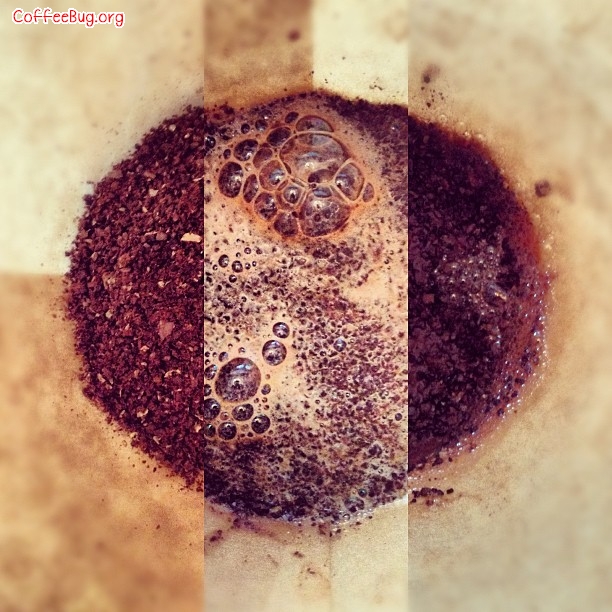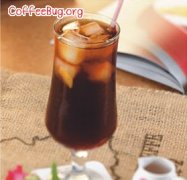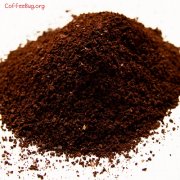Analysis of the composition of coffee beans what ingredients are contained in a coffee bean?

Raw beans (unit: percentage)
Moisture: 11.3
Fat: 11.7
Protein: 11.8
Sugar: 8.0
Essence: 17.1
Caffeine: 1.3
Salvianolic acid: 6.0
Minerals: 4.2
Crude fiber: 28.6
Ripe bean
Moisture: 2.5
Fat: 13.2
Protein: 12.8
Sugar: 1.8
Essence: 29.6
Caffeine: 1.3
Tannic acid: 4.0
Minerals: 5.2
Crude fiber: 29.6
Composition analysis
Caffeine: caffeine is the most eye-catching of all the ingredients in coffee. Its effect is extremely extensive, and it will affect the brain, heart, blood vessels, gastrointestinal tract, muscle, kidney and other parts of the human body. An appropriate amount of caffeine stimulates the cerebral cortex, promotes sensation, judgment, memory, and emotional activity, makes the myocardial function more active, dilates blood vessels, enhances blood circulation, and improves metabolic function. Caffeine can also reduce muscle fatigue and promote digestive juice secretion. In addition, because it also promotes kidney function and helps the body expel sodium ions from the body, caffeine does not accumulate in the body like other narcotic and excitatory substances and will be excreted in about two hours.
Tannic acid: the refined tannic acid will turn into a yellowish powder, which can easily blend into the water. Once boiled, it will decompose and produce pyrosylic acid, making the coffee taste worse.
Fat: the fat contained in coffee plays a very important role in the smell of coffee. After analysis, it is found that there are many kinds of fats in coffee, the most important of which are acidic fat and volatile fat. Acidic fat means that fat contains acid, and its strength varies with different types of coffee. Volatile fat is the main source of coffee aroma. It is a very complex and delicate thing that emits 40 kinds of aromatic substances.
Sugar: coffee beans contain about 8% sugar. After baking, most of the sugar will be converted to caramel, bringing a unique brown to the coffee.
Extract: can be divided into several kinds, accounting for nearly 1/3 of baked beans, light is still not known to cause what effect of the substance.
Minerals: there are lime, iron, sulfur, sodium carbonate, chlorine and so on, but because the proportion is not high, it does not affect the flavor of coffee, which will only bring a little astringency.
Crude fiber: the fiber of raw beans will be carbonized after baking. The caramelization of carbon and sugar combine to form the hue of coffee, but the fiber turned into powder will have a considerable impact on the flavor of coffee.
The composition of coffee
Composition
Characteristics
Affect the flavor of coffee
Caffeine
1. Plants of the genus Flavin and theobromine, the same as theophylline.
two。 Stimulate cerebral cortex and vasodilation.
3. Promote kidney function and diuresis.
4. Stimulate stomach peristalsis, stomach disease should not drink too much.
Palate: bitter
Salbutyric acid
1. Yellowish powder.
two。 When boiled, pyrosylic acid is produced.
Sour taste, sweet taste
Fat
1. Coffee contains a lot of fat.
two。 There are mainly acidic fat and volatile fat.
Acid fat-sour taste
Volatile fat-fragrance
Protein
1. The source of calorie can not be filtered out.
two。 It will be carbonized after baking.
Coffee liquid is dark brown and fragrant.
Carbonization shows a bitter taste.
Sugar
1. It will be converted into caramel after baking.
two。 Caramel will combine with tannic acid to form a slightly bitter sweet taste.
Coffee liquid is dark brown and fragrant.
It tastes bitter after caramel.
Extract essence
1. The reason why coffee is called coffee.
two。 At present, it has not been found out what kind of substance is formed.
Palate: mellow
Mineral substance
1. The proportion of coffee ingredients is very low.
two。 It has little effect on the quality and flavor of coffee.
Taste: astringent taste
Crude fiber
1. It will be carbonized after baking.
two。 Carbonization and caramelization combine to form a coffee hue.
The coffee liquid is dark brown and bitter
Main raw materials:
Coffee
Of course there are coffee pineapple in the coffee jar.. But coffee..
Coffee.. Let's talk about it. Coffee, plant name, Rubiaceae
Born in the tropics, an evergreen shrub
Two feet tall, the leaves are oval.
White flowers, dried fruit and ground into powder can be used as a beverage.
According to the coffee grown in different regions and the different cultural customs of different places.
Different ways of drinking coffee have been bred..
One by one in front of people.
Caffeine is one of the most characteristic coffee ingredients, which can make you excited, diuretic and digestible.
Detoxification. 100g of coffee beans.. Contains about 1.3 g of caffeine.
A can of 250ml coffee contains more caffeine than 200PPM.
water
Water is a colorless and senseless transparent liquid needed in daily life.
The company that makes these coffee drinks
More factories are set up in places with good water quality..
So everyone can rest assured to take a big drink..
Granulated sugar
The primary brown sucrose is a white lump of sugar 3. Carbohydrate:
Coffee contains only a small amount of sugar, but once roasted, it will be lactose and form.
The characteristic brown of coffee.
Once baked, the fiber will be carbonized.. After the fusion of perforated saccharified carbohydrates.
It forms the characteristic color of coffee.
Fatty acid sucrose lipid
Fatty acids are the combination of CH+1COOH machine and alkane machine.
Sucrose fat. It's sucralipid. Write to those who know!
There are about 6 grams of tannic acid in 100g fresh coffee beans. It's the reason why the coffee is drunk.
The reason why you will suffer. But the degree of bitterness is inversely proportional to the degree of baking.
Emulsion tranquilizer
Emulsification is when two are mixed together without melting or precipitating.
Of course! How can the coffee in the coffee jar be emulsified?
So add emulsion tranquilizer to keep him in a perfect state of harmony..
Sodium citrate
This is an organic compound..
It's a colorless crystal..
With a refreshing smell..
All the fruits like Lianzi and oranges have this taste..
Nutritive composition
Internal capacity
The average coffee can contains 375ml. 310ml. 300ml. 250ml. Wait for several different specifications..
There is also an extra 50%. This is... I don't remember the number..
Heat quantity
Usually; usually. A can of 250ml coffee contains 100 calories..
Fat
Fat. It's animal oil.
It's a little disgusting to say that.
Don't be afraid to drink coffee because of this.
The fat content of a can of 250 is usually 1.6 grams.. The source is milk..
Play an important role in improving the flavor of coffee.
Carbohydrate
The compound between carbon and water.. Carbon is also a very important component of the human body..
A can of 250ml coffee contains 20 grams of carbohydrates..
Protein
A complex compound synthesized by polymerization of amino acids. It is an important component of the human body. 4. Protein:
The fried coffee contains almost no protein. But even if the amount is small, after the protein is broken down.
It can also improve the flavor of coffee.
A can of 250ml coffee contains 3.4g of protein..
Calcium
This is a substance with considerable activity.. From a chemical point of view
From a healthy point of view. Calcium.. It is of great help to the human body.
It can prevent crisp bone disease.
A can of 250ml coffee contains 83 milligrams of calcium.
Important Notice :
前街咖啡 FrontStreet Coffee has moved to new addredd:
FrontStreet Coffee Address: 315,Donghua East Road,GuangZhou
Tel:020 38364473
- Prev

Steps of making special fancy coffee making of honey iced coffee
Honey iced coffee ingredients: coffee beans 60 grams / 6 cups, cold boiled water 720cc/6 cups, crushed ice. Beans: iced coffee beans (deep baked). Utensils: ice drop coffee group, pill filter paper, bean grinder, honey about 1 ounce. Use the cup: HG9811 shape glass. 1. The coffee is extracted by the "ice drop coffee usage" with the ice drop coffee group. two。 Will be extracted
- Next

Freshness is the importance of good coffee it is important to master the roughness and fineness of coffee beans
Freshness is the first element of good coffee, and the second important task is to master the roughness and fineness of coffee beans, which directly affects the extraction effect, that is, the quality and intensity of coffee flavor. In principle, the finer the coffee powder, the longer the brewing time, the stronger the coffee flavor; on the other hand, the thicker the coffee powder, the shorter the brewing time, the lighter the taste. The longer the extraction time, the thicker the beans will be ground so as not to cause excessive extraction.
Related
- Detailed explanation of Jadeite planting Land in Panamanian Jadeite Manor introduction to the grading system of Jadeite competitive bidding, Red bid, Green bid and Rose Summer
- Story of Coffee planting in Brenka region of Costa Rica Stonehenge Manor anaerobic heavy honey treatment of flavor mouth
- What's on the barrel of Blue Mountain Coffee beans?
- Can American coffee also pull flowers? How to use hot American style to pull out a good-looking pattern?
- Can you make a cold extract with coffee beans? What is the right proportion for cold-extracted coffee formula?
- Indonesian PWN Gold Mandrine Coffee Origin Features Flavor How to Chong? Mandolin coffee is American.
- A brief introduction to the flavor characteristics of Brazilian yellow bourbon coffee beans
- What is the effect of different water quality on the flavor of cold-extracted coffee? What kind of water is best for brewing coffee?
- Why do you think of Rose Summer whenever you mention Panamanian coffee?
- Introduction to the characteristics of authentic blue mountain coffee bean producing areas? What is the CIB Coffee Authority in Jamaica?

